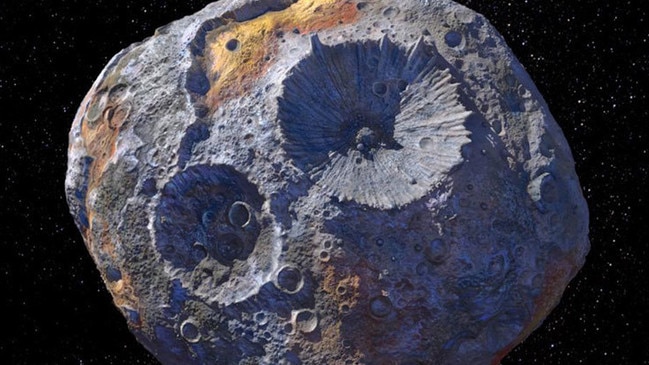Iron asteroid that can make us all billionaires
Somewhere far away hurtling through space is a giant ball full of metal. Elon Musk is investigating.

Somewhere far away hurtling through space is a giant ball thought to be made from enough metal to make everyone on Earth a billionaire.
It may seem fitting then that the man chosen to help humanity reach it is Elon Musk. NASA has named Space X, the billionaire’s space exploration firm, to help it to explore the asteroid called 16 Psyche.
American scientists have said that the body, probably once the core of a planet, contains iron worth $15.7 quadrillion. A quadrillion is one followed by 15 zeros. Shared among the world’s nearly eight billion people, this would amount to about $2 billion each.
There is no plan to bring it back, but researchers’ interest in it stems from its similarities to other planets.
Scientists believe that the asteroid, which is about 324 million miles away and has a diameter of about 140 miles, is the molten core of a dead planet. It is believed to have been stripped of its rocky mantle by collisions billions of years ago. Its core has since slowly cooled into a solid mass of iron and nickel.
Pysche, which is shaped like a potato and sits between Mars and Jupiter, is not like other asteroids, which are rocky or icy bodies, and could give us an extraordinary insight into how planets are formed. Deep within Earth there is likely to be a similar metallic core, but it is unattainable below the rocky mantle and crust. Looking at Psyche is likely to provide a window into the distant past of the solar system.
The NASA probe will not be landing on the asteroid but will orbit around it for 21 months, exploring different ages on its surface and determining whether Psyche is the core of a planet-size object. What SpaceX will do is push the unmanned robotic spaceship into space with the help of Falcon Heavy, the world’s largest operational rocket since the Saturn V that took men to the moon. When Falcon Heavy lifts off in Florida in July 2022, its side boosters will separate from the main body, rotate and start the return to Earth to be reused. The NASA spaceship is expected to reach Psyche in 2026. The payload will also include equipment for two other NASA missions. One will examine the Martian atmosphere and the other will study binary asteroids.
THE TIMES





To join the conversation, please log in. Don't have an account? Register
Join the conversation, you are commenting as Logout